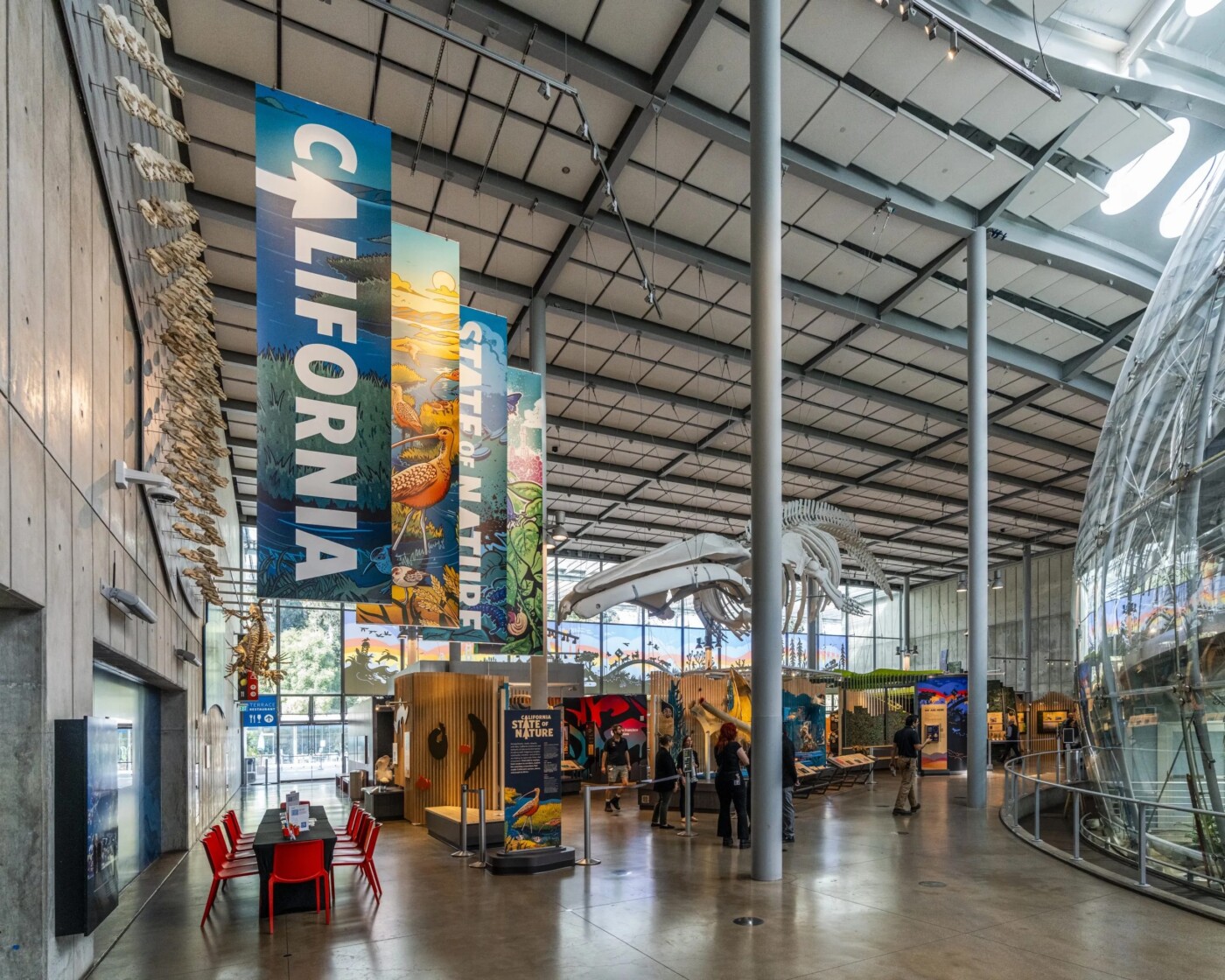From California’s last grizzly bear to the kelp forest of the coastline, the California Academy of Sciences’ newest exhibition “California: State of Nature” illustrates the state’s magnificent biodiversity and the human role in maintaining it.
Divided into sections focusing on forests, coastal areas, desert and the urban environment, the expansive exhibit includes interactive displays, sensory experiences, stylized artwork and copious animal specimens.
Each region is organized around a kiosk with introductory videos.
The Academy’s first exhibit in six years is the result of ongoing research and collaboration with other scientific organizations, nonprofits and members of the Indigenous community.
“California is one of the most biodiverse places in the world. The Thriving California Initiative focuses on how we humans can help strengthen biodiversity. We wanted this major exhibit to reflect our recent mission of regenerating the natural world; it is more human-focused,” said Paige Laduzinsky, senior exhibit content director.
A show highlight in the “forest and fire” section is the reintroduction after 12 years of the grizzly bear specimen Monarch. In 1889, the bear was captured in the San Gabriel Mountains on an order from publicity-seeking newspaper impresario William Randolph Hearst. Named after named after Hearst’s paper the San Francisco Examiner, “monarch of the dailies,” Monarch was immured in Golden Gate Park and the San Francisco Zoo for 22 years before he was euthanized.

Despite the sad tale, Laduzinsky calls Monarch “an important ambassador species for thinking about species extinction — whether we want to prevent extinction and if we want to bring the species back to California,” adding that grizzly bears are being relocated and reintroduced in Washington state.
Redwoods are celebrated with an 8,500-pound cross-section of a fallen old-growth redwood.

A three-panel video illustrates the phenomena of forest fires, comparing planned conflagrations to wild ones. An immersive video shows how Indigenous populations wisely planned fires that facilitated the livelihood of plants and animals.
Among interactive experiences are bronze bird casts; when visitors touch the birds, the calls of the red-breasted sapsucker, brown creeper and olive-sided flycatcher are activated.
The “sea to shore” coastal section focuses on the kelp forest, which harbors and nurtures numerous plant and animal species.
Academy scientists from the Steinhart Aquarium along with researchers from aquariums across the state are working to regenerate the sunflower sea star population, which has been decimated by disease.

The pizza-shaped sunflower sea star feeds on urchins, which devour kelp. Fewer sea stars mean more urchins and less kelp. This chain of events has created huge habitat loss.
Illustrations of ocean fauna, whale skeletons and sea birds are abundant to mesmerize lovers of marine life.
Specimens of desert plants and animals — the spiny lizard, the black-tailed jackrabbit, the desert kit fox and scorpions, among others — recreate the experience of being in the high mesas. Certain animals rely on the desert night sky to thrive and aid in migration, according to the display, interpreted by Women in Science Discovering Our Mohave, aka WISDOM, a group championing underrepresented women in STEM.
The Academy partnered with Christopher J. Schell, an assistant professor in the Department of Environmental Science at University of California, Berkeley, to explore the interconnectivity of animal, plant and human life in urban environments, demonstrating “how the lives of animals reflect the lives of people and their socio-economic factors,” said Laduzinsky.
She enumerated the “4Cs” of urban economy: cameras, collars, carcasses and community, noting that carcasses can reveal much about animal life in cities because their DNA is captured and used in research.

Contrary to popular opinion, coyotes are beneficial in cities because they feed on small rodents and are not aggressive to humans, Laduzinsky said.
A coyote specimen (the animal, a victim of a traffic collision, was donated by San Francisco Animal Care and Control), Laduzinsky said, is “a reminder of the need for more wildlife corridors.”
Pointing to a figure of a bobcat wearing a tracking collar, Laduzinsky called the device one of the important tools in analyzing animal populations.
A salient feature of California’s ecology is the ever-present possibility of earthquakes. Another “State of Nature” highlight is the Shake House, a chamber for experiencing simulations of famous local quakes: the 7.9 magnitude Great San Francisco Earthquake of 1906 and the 1989 Loma Prieta temblor of 6.9 magnitude.
Guests entering the chamber may grasp a railing, as a 15-second re-creation of the 1989 tremor is unleashed. It’s followed by a 30-second simulation of the 1906 quake, which, in real life, lasted between 45 to 60 seconds.
But the force of the Shake House experience is enough to create fear, nonetheless.
“California: State of Nature” is at the California Academy of Sciences, Golden Gate Park, 55 Music Concourse Drive, San Francisco. Hours are 9:30 a.m. to 5 p.m. Mondays-Saturdays and 11 a.m. to 5 p.m. Sundays. Dynamic admission prices run $35-$45. Call (415) 379-800 or visit calacademy.org for more information.
The post California biodiversity stars in Academy of Sciences’ new permanent exhibition appeared first on Local News Matters.
